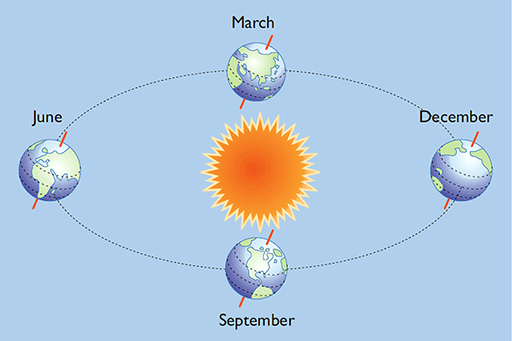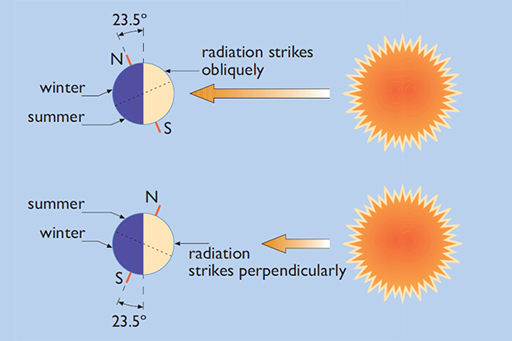2 Direct and diffuse solar radiation
Some of the Sun’s energy is diffuse, and some is direct. Both forms are useful in most solar thermal applications, but what are they, and what are the differences?
When the Sun’s rays hit the atmosphere some of the light is scattered, depending on the cloud cover. A proportion of this scattered light comes to Earth as diffuse radiation. On the ground this appears to come from all over the sky. This diffuse radiation provides most of the ‘daylight’ in buildings.
The portion of light that appears to come straight from the Sun, normally called ‘sunshine’, is known as direct solar radiation. It can be focused to generate very high temperatures, or can be used without such concentration in active solar heating systems. On a clear day, its power density can approach 1000 watts (1 kW) per square metre.
In northern Europe and in urban locations in southern Europe, practical peak power densities are around 900 to 1000 watts per square metre. In Northern Europe, on average over the year approximately 50% of radiation is diffuse and 50% direct. In Southern Europe, where solar radiation levels are higher, most of the extra contribution comes from direct radiation, especially in summer.
Activity 2 Energy output of the sun
If the energy output of the Sun is constant, why does the UK, for example, receive more radiation in summer than in winter?
Answer
This is because the Earth circles the Sun with its polar axis tilted towards the plane of rotation, as shown in Figure 2. In June, the North Pole is tilted towards the Sun therefore its rays strike the northern hemisphere more perpendicularly and the Sun appears higher in the sky, as you can see by looking at Figure 3 In the northern hemisphere in December the North Pole is tilted away from the Sun and its rays strike more obliquely, resulting in fewer kilowatt-hours reaching each square metre of ground per day.


Another important factor is that the lower the Sun is in the sky, the further its rays have to pass through the atmosphere, giving them more opportunity to be scattered back into space. When the Sun is at 60° to the vertical its peak energy density will have fallen to one-quarter of that when it is vertically overhead.
So how much solar radiation is available in different locations?
